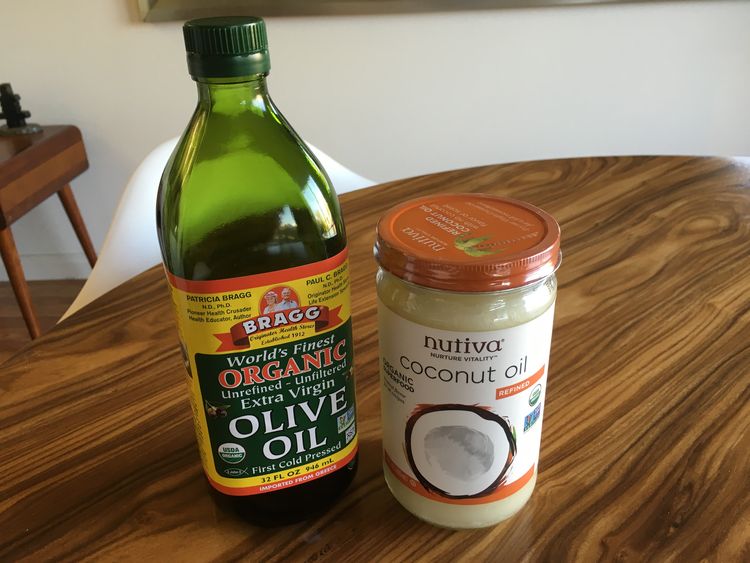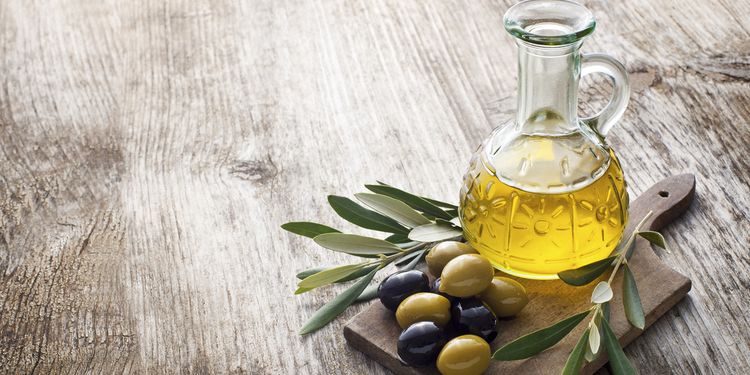The Healthiest Oils To Cook With

Your masterpiece sits on the table. Succulent steaks, sautéed vegetables, and mouth-watering side dishes await. You’ve laid out the best for your family, but a question looms- are you doing them more harm than good?
It might be time to take a look at the clear, plastic, two-quart jug of canola oil in your pantry. Low-grade, highly processed cooking oils— like canola oil— have been linked to a cascade of health defects that can negatively affect you and your family. Instead of sautéing your dinner in potential carcinogens, take time to learn which cooking oils are vitamin packed, improve brain function, raise good cholesterol, and taste great.
Are You Eating Rancid Oils?
So how do you determine if your oil is rancid? In the arena of fats, you’ve got saturated, mono-saturated, mono-unsaturated and polyunsaturated. The first three are atomically stable, the fourth isn’t. If you remember anything from high school chemistry, stable elements are good; unstable elements go “Boom!” In this case, the “boom” is the explosion of free radicals from the chemical breakdown of fat. Free radicals can lead to birth defects, learning disabilities, cancer, diabetes, obesity, increased cholesterol and a whole onslaught of other abnormal effects.
There are several ways oils become rancid. The first can happen in your kitchen. You want to fry up some sweet potatoes, so you throw some oil in the pan and fire it up. However, certain oils only take but so much heat before chemically breaking down. This breakdown is called the smoke point. If you’re sautéing and your oil begins to smoke, it’s time to turn the heat down.
Rancidity can also occur during the manufacturing process. Cheap cooking oils like vegetable, canola, or safflower oil have been highly processed— which includes hydrogenation or refining— in an attempt to stabilize them.
Manufacturers use harsh methods like high heat, pressure, and chemical solvents to extract the oil. Then they add more heat, preservatives, flavoring and dyes to create an edible product. By the time they hit grocery shelves, these oils have been stripped of their antioxidants and nutrients, and have long begun to break down.
So how do you avoid buying pre-sabotaged oils or cooking up free radicals in your meals? The first step is to look for unprocessed to minimally processed oils. The second step is to check the heat threshold on your cooking oils.
The Best Oils For Cooking
Coconut Oil
Thrust into the spotlight as “the cure-all oil”, coconut oil lives up to a lot of the hype. It’s jam-packed with lauric, capric and caprylic acids, which are known for being antimicrobial, antioxidant, antibacterial.
Coconut oil also features medium chain triglycerides (MCT), which are easily digestible because they don’t depend on your bile for its breakdown. It’s also highly saturated, which means it’s stable at a smoke point of 350 degrees Fahrenheit.
Don’t be fooled by the price tag. Some brands of coconut oil (even expensive ones) use a low-standard fermentation process that allows toxins back into your “cure-all”. If you prefer the coconut flavor to your oils, extra virgin is the way to go. If not, the organic refined variety offers a more subtle taste- just make sure it’s not hydrogenated.

Grass-Fed Butter/Ghee
If you’re guilty of being heavy handed with the butter knife, this might ease your mind. Grass-fed butter has a healthy ratio of Omega 6 to Omega 3 fatty acids and contains vitamins K, D, and A! The smoke point is 350 degrees Fahrenheit.
Ghee is similar to grass-fed butter, but with all dairy proteins and sugars having been cooked out (clarified). Ghee is used in many Indian dishes, as it has a rich, savory flavor. It can also be used to brown or sear meats, thanks to its smoke point of 485 degrees Fahrenheit.
Grass-Fed Beef Tallow
Again, grass-fed over grain-fed because cows are made to eat grass. Tallow is made from the animal fat, like butter is made from milk fat. However, it’s solid at room temperature. Not only is tallow chalked with nutrients and high in good cholesterol (LDLs), it’s also good for pan-frying meat and vegetables, thanks to its high smoke point of 420 degrees Fahrenheit. Choose beef tallow if you’re looking for a milder flavor than ghee or coconut oil.
Duck Fat
You might have missed the memo about duck fat, so here’s the second memo: cook with duck fat. There once was a time when French fries were cooked in duck fat. Another powerhouse of stable fats, duck fat provides high smoke points and crisp flavors for an authentic French fry experience. Duck fat is nutrient dense with linoleic acids and omega 3s.

Is Cooking With Olive Oil Safe?
You might have noticed that olive oil wasn’t a part of the aforementioned list. So is cooking with olive oil safe? The short answer is yes. The longer answer is also yes, but unlike the stable, saturated fats listed above, olive oil is primarily mono-unsaturated. However, it doesn’t become a rancid, toxic, waste land upon cooking.
Interestingly enough, a case study of extra virgin olive oil showed that it resisted breakdown better than most other vegetable cooking oils. In multiple case studies, extra virgin olive oil could withstand hours of frying without generating toxic amounts of chemical waste.
The breakdown however, is dependent on whether your oil is extra virgin or refined. Refined oils degrade more rapidly than extra virgin oils because they’ve been stripped of their antioxidants and nutrients. The antioxidants in extra virgin olive oil protect the chemical integrity of the oil under heat, and also protect its nutrients. These effects continue even while the oil is in your body!
If you also want these effects, ensure that the olive oil you’re buying is extra virgin quality. Therefore, it’ll be dense with phenolic compounds and linoleum acid, which produce these antioxidant wonders. Here’s how to ensure that your oil is authentically extra virgin:
- Look for harvest dates 18 months ago or fewer (i.e. When did they pick the olives?)
- Choose dark glass bottles (light = oxidation = rancid)
- Domestic produce typically has honest labeling (California, etc.), and is less likely to be diluted with other vegetable oils
- Peppery or pungent tasting olive oil means high phenol content and more antioxidants
- Make sure the label says “extra virgin” and not “refined”
Use these tips, and store your oils in cool, dark places to fend off rancidity. Go back to those savory aromas and warm feelings with your family at the dinner table. Don’t sabotage those moments with toxic oils. Use the best ingredients to reap the best meals. Antioxidants, Omega 3’s, an alphabet of vitamins, and great flavor? Yes, please. Great food makes you feel good, so make a great meal tonight.
